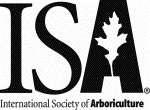
| Current Articles |
| Browse Archives |
| Search |
| Contact Us |
| AUF Home |
 |
Arboriculture & Urban Forestry Online
| Volume 6, Issue 4 —
April 1980
https://www.isa-arbor.com/Publications/Arboriculture-Urban-Forestry |
|
Structural Development of Trees (View PDF) Richard W. Harris Abstract: To develop a tree that is structurally strong, it should be trained to exploit the better elements of its branching pattern and growth characteristics. A tree develops a welltapered trunk, better able to distribute stress uniformly along its length, if it is grown with more than one-half of its foliage on branches that originate from the lower two-thirds of the trunk. Branches are attached to the trunk more securely if they are well-spaced vertically along the trunk, are thinner than the trunk where they arise, and have wide angles of attachment. An unstaked tree can move in the wind, resulting in a shorter tree, with larger trunk caliper, greater taper, and a larger root system better able to withstand the elements without support. Stakes and ties detract from tree appearance and can seriously injure the trunk. The angle at which a main branch grows can be directed by pruning to a more upright shoot or by leaving a spreading branch to be more horizontal. Keywords: |
Current Articles
| Browse Archives | Search | AUF Home | ISA Home
| Get Acrobat